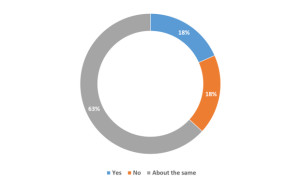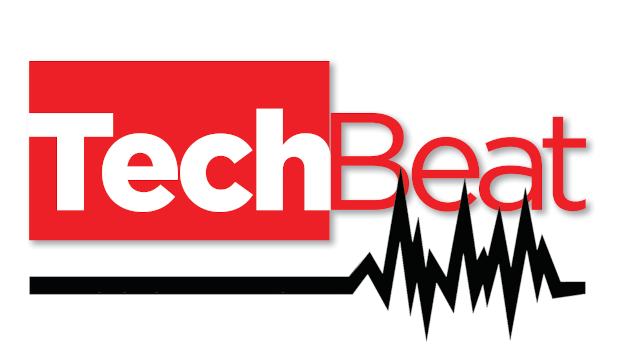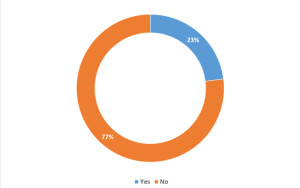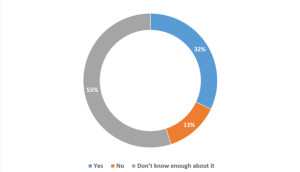The term software defined has evolved somewhat in recent times from being primarily network focused to more of a trend in general toward abstraction from hardware that facilitates greater orchestration and control. In fact, the trend has expanded far beyond networking now and is being experienced in areas such as storage and beyond.
But despite this relentless march, the full impact of software defined networking (SDN) is yet to be realised, as even early adopters are seeing the solutions evolve and develop as supporting and complementary infrastructures get up to speed. However, the market appears to be gaining momentum, as analyst IDC has predicted that global the SDN market is set to grow to more than $8 billion (€7.2 billion) by 2018. While it is acknowledged by most analysts and commentators that this growth will, initially, be primarily among larger enterprises looking to consolidate and move towards the software defined data centre (SDDC), the inevitable trickle-down effect is already underway, and many organisations have found that SDN, and indeed network virtualisation (NFV) features, are available in equipment deployed recently. This introduction by stealth is providing many with the opportunity to evaluate and understand the trend without massive outlay.
To try to get an understanding of where Irish organisations are in terms of perceptions and especially risk around SDN, TechPro, in association with Dimension Data, conducted a survey among Irish ICT professionals asking about evaluation, adoption, perception and risk.
There were 76 respondents to the survey, and while the majority were from larger organisations, of those some 4 out of 10 were from companies of 1,000 or more. Just over a third (37%) were from smaller companies up to 100 people. In terms of sector, it was perhaps no surprise that half of respondents were from the technology sector, followed by government (17%), production/manufacturing and healthcare were both on 9%, media on 6%,retail on 4%, with others below this.
The first question asked was whether organisations were currently, or considering, evaluating SDN technologies. A strong 47% said they were, but this must be tempered by the previous response showing sector breakdown.
“It’s interesting to see that so many – nearly half of those surveyed – are evaluating what is still a relatively new area in networking technology for the enterprise, especially given that the sample is across a variety of sectors and size of organisation,” commented Ron Maher, director, Dimension Data Ireland. “It is very likely that this figure would have been much lower a year ago and is encouraging to see that SDN is gaining more mainstream interest and acceptance.”
The next question asked about those organisations that had already embarked on SDN implementation. A strong 23% said that they had. While again tempering this result with the sector results, it is still a strong indicator of early adoption in Ireland for these technologies.
Maher is pragmatic in his interpretation, saying that it is, perhaps, less surprising to find out that the majority of respondents have not already implemented SDN.
“There are many obstacles to implementation,” said Maher, “not least due to its technical nature. All but the largest organisations will need some form of outside assistance to plan and deploy SDN projects.”
Indeed, this point was supported by further questions that asked about skills and training, as well as vendor support.
When asked whether they felt that their organisations currently had the skills in-house to implement and manage SDN technologies, only 16% agreed, with more than two thirds (68%) disagreeing, but another 16% said that training was underway.
More positively, when asked about support from vendors and partners, more than half (51%) were confident in their abilities to meet SDN needs. A little worrying was 32% who said they did not know if technology partners and vendors were so prepared. When compared with the metric on the number of organisations considering or already evaluating, it would appear to be something of an oversight not to consult technology partners and vendors for expertise and insight, as currently, with such a new set of technologies and practices, this is clearly the main source of expertise.
“It’s interesting that only half of the respondents are confident that their current partners are able to support SDN,” said Maher. “Even though it is not a mature technology for the enterprise, SDN has been a key aspect of carrier networks and cloud/data centre for some time, so organisations should look for partners with a track record in these areas.”
The rest of the questions were focused on perceptions and risk around SDN technologies.
When asked to name their top three benefits or SDN technologies, top choices were more flexible networks (68%), faster delivery of network services (64%) and better utilisation of network resources (50%), with better support for emerging services (mobile, big data, private/hybrid cloud) and increased flexibility in procurement (avoiding vendor lock-in) both around 46%. In the other category, scalability was specified.

Do you perceive SDN technologies as being more or less secure than conventional networking technologies?
“Here we see all the main benefits of SDN called out,” said Maher, “especially its inherent flexibility and the speed at which new network services can be designed and deployed. It’s very important to consider the largely vendor-agnostic characteristics of software defined networks, as this introduces factors around cost and availability of equipment and support, enabling organisations to make important decisions regarding the value of their network and its cost of ownership.”
The fact that the benefits of SDN technologies are so clearly indicated would suggest that vendor messaging around this has been successfully communicated. However, this may have led to a slight overconfidence among early adopters which may explain the earlier response where almost a third said that they did not know the capacity of vendors and partners to support the technology, suggesting a lack of consultation. While some analysts have predicted that the SDN trend may ultimately lead to the end of network specialists with vendor-specific qualifications, for now, traditional network expertise is required, bolstered by SDN knowledge.










Subscribers 0
Fans 0
Followers 0
Followers